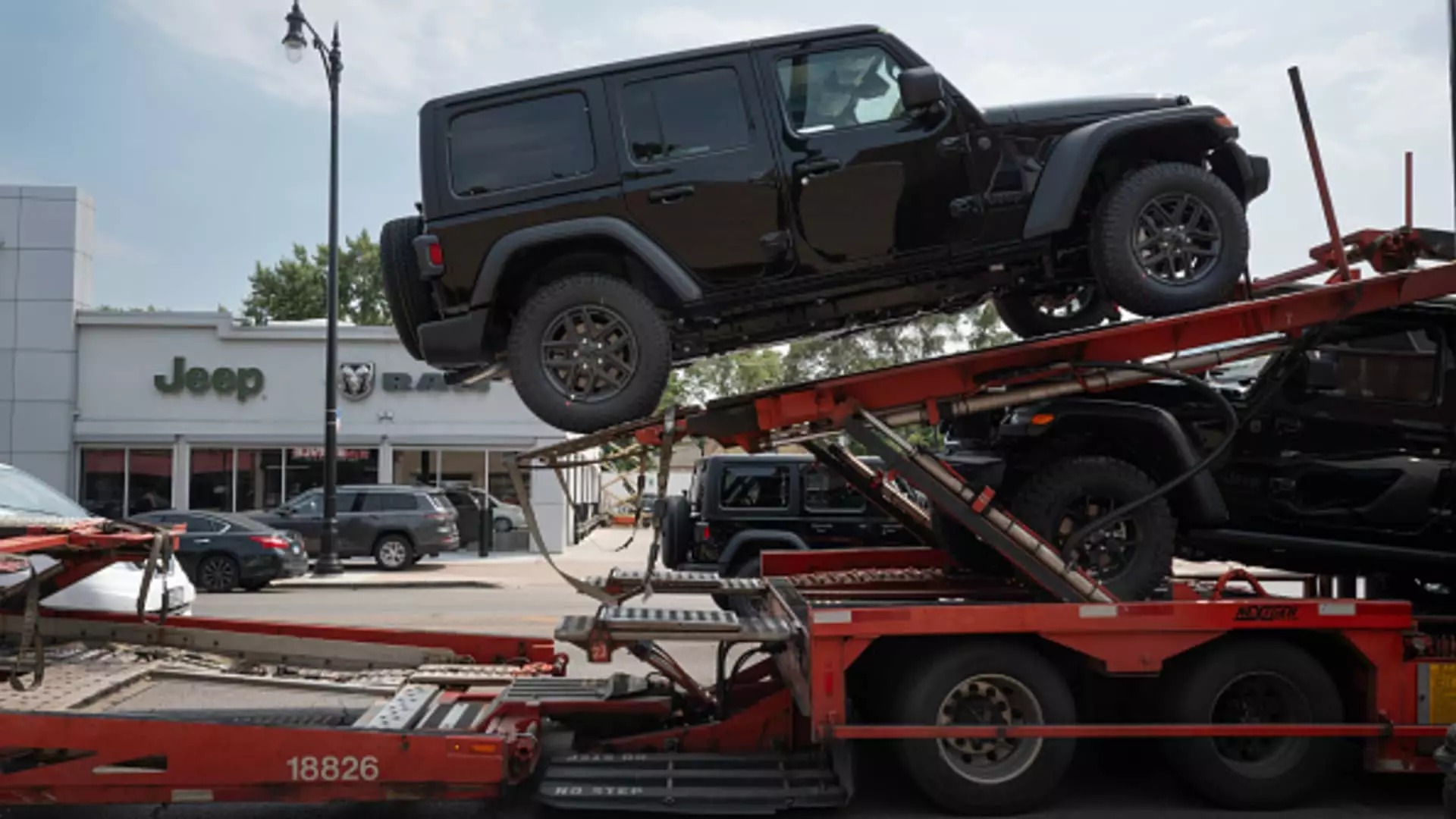Stellantis, the Anglo-American automotive giant, has decided to close and sell its Arizona vehicle proving grounds by the end of the year. This decision is not just an isolated incident but a part of a broader strategy under CEO Carlos Tavares, who is grappling with mounting pressure from various stakeholders, including Wall Street investors, dealership networks, and the United Auto Workers (UAW) union. The automaker faces significant financial challenges, characterized by layoffs, declining market performance, and cost-cutting measures that have become increasingly necessary for survival in a competitive industry.
The Arizona facility has been a critical asset for Stellantis since its acquisition in 2007, when Chrysler purchased the sprawling 4,000-acre grounds from Ford Motor for $35 million. Situated conveniently between Phoenix and Las Vegas, the site has served as a vital hub for vehicle testing and development. At its peak in 2019, the facility employed 69 individuals, many represented by the UAW, underscoring its role not just as a physical space for automobile innovation but also as a workplace for dedicated employees. However, the harsh realities of a struggling auto market have forced Stellantis to reevaluate its operational footprint.
According to reports from those familiar with the internal decisions, Stellantis will be shifting its testing operations to a proving ground owned by Toyota Motor, which opened its facilities to other automakers in 2021. This pivot towards utilizing external resources rather than maintaining in-house facilities reflects a growing trend where automakers are increasingly leveraging partnerships in response to economic pressures. The announcement of the closure highlights Stellantis’ ongoing assessment of its assets, as the company cited the need for improved efficiency and a streamlined operational model to remain competitive in an ever-evolving automotive landscape.
Despite the inevitability of such cutbacks, Stellantis is attempting to mitigate the impact on its workforce. The automaker has communicated plans to work with UAW representatives to provide options to affected employees, including special severance packages and the possibility of transferring to other operational roles within the company. However, there is a looming threat of indefinite layoffs that would place many workers in a precarious financial position for the foreseeable future. This dual approach of offering support while simultaneously cutting jobs has fueled outrage and skepticism among workers and union representatives, who have increasingly criticized Tavares’ management strategy.
The closure of the Arizona proving grounds is one of multiple facilities that Stellantis hinted could be shuttered during last year’s negotiations with the UAW. Other locations are primarily parts and distribution centers, which the company envisions consolidating into larger mega sites. This consolidation strategy raises concerns among local and state officials about further job losses, particularly as politicians like Michigan Governor Gretchen Whitmer have expressed deep apprehension regarding the potential closure of Stellantis’ former headquarters in Auburn Hills.
Stellantis’ aggressive layoff strategy and downsizing are symptomatic of larger shifts within the automotive industry. The company has reduced its workforce by an alarming 15.5%, shedding approximately 47,500 employees between December 2019 and the end of 2023. The majority of these cuts have occurred in North America, where the firm has reduced its headcount by 14.5%. As a result, Stellantis now has a significantly smaller workforce compared to its competitors. For instance, the company is employing only about 11,000 salaried employees, in stark contrast to General Motors and Ford, which maintain workforces of 53,000 and 28,000, respectively.
In a bid to further cut costs, Stellantis has increasingly shifted its engineering operations to countries with lower labor costs, such as Brazil, India, and Mexico. By outsourcing to these regions, Stellantis can save approximately €50,000 ($53,000) per employee annually, which is significantly less than salaries for similar positions in the United States or Europe. This move reflects a growing trend in the automotive sector towards global labor arbitrage and raises pressing questions about the long-term sustainability of domestic job growth within the industry.
As Stellantis navigates these turbulent waters, the company’s capacity for recovery will depend on its ability to balance financial performance with workforce stability. The closure of the Arizona proving grounds illustrates the urgent need for innovative approaches to business models in an environment that demands efficiency, cost reduction and, ultimately, a commitment to retaining valuable talent. Should Stellantis successfully adapt to this shifting landscape, it may emerge stronger; however, the challenges ahead remain formidable.


Leave a Reply